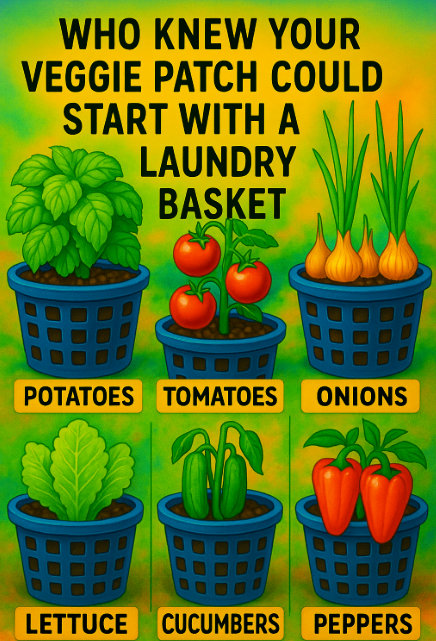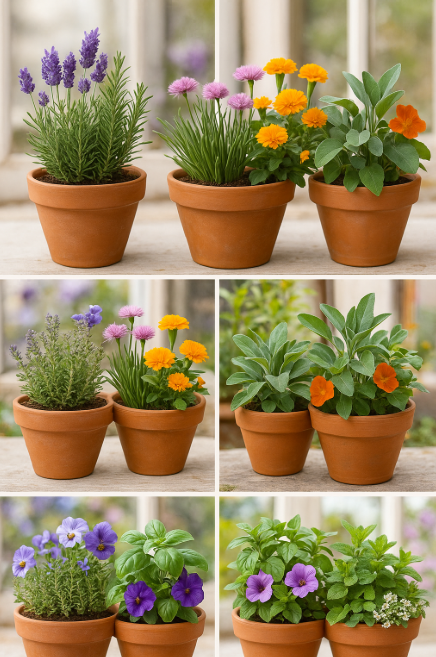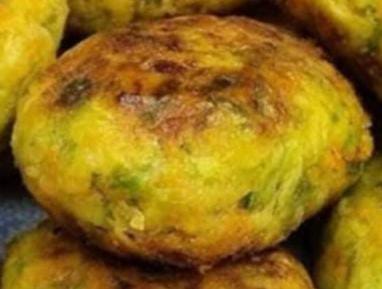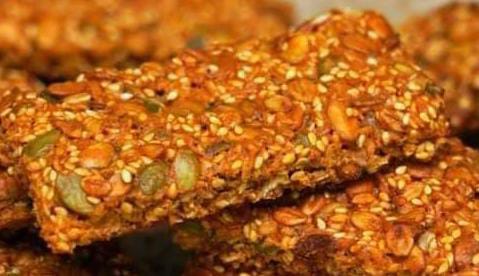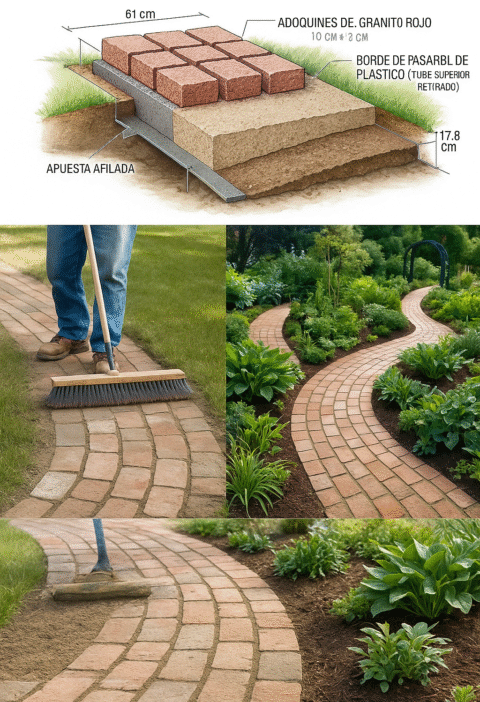Laundry Basket Gardening: Turn Your Hamper into a Bountiful Veggie Patch
Who knew your veggie patch could start with a laundry basket? With a few simple supplies and a sunny spot, you can transform an everyday household item into a high‐yield, space-saving container garden. In this guide you’ll discover why laundry baskets make excellent planters, how to set yours up, detailed growing tips for six popular vegetables, the underlying plant physiology in containers, real-world success stories, advanced pro tips, troubleshooting advice, FAQs, and delicious recipes featuring your homegrown harvest from CanadianEdShop.
Table of Contents
- 1. Why Laundry Baskets Make Great Planters
- 2. Materials & Setup
- 3. Growing Potatoes Deep in a Basket
- 4. Basket-Grown Tomatoes: Support & Care
- 5. Onions in Close Quarters
- 6. Lettuce: Shallow, Fast & Crisp
- 7. Vertical Cucumbers with a DIY Trellis
- 8. Peppers: Sun-Loving Basket Beauties
- 9. In-Depth Physiology: Roots, Water & Nutrients in Containers
- 10. Four Real-World Basket Gardening Case Studies
- 11. Advanced Pro Tips for Bigger Baskets
- 12. Troubleshooting Common Issues
- 13. Frequently Asked Questions
- 14. Related Recipes on CanadianEdShop
- 15. Conclusion & Next Steps
1. Why Laundry Baskets Make Great Planters
Laundry baskets are:
- Affordable & Repurposed: Give new life to an item you already own.
- Portable & Lightweight: Easy to move for sunlight or frost protection.
- Excellent Drainage: Perforations allow excess water to escape, preventing root rot.
- Deep & Spacious: Perfect for root crops like potatoes, with room for deep soil layers.
By selecting food-grade baskets or lining them with landscape fabric, you can create a safe, durable container that supports a variety of vegetables—even in small spaces like balconies or patios.
2. Materials & Setup
- 1 sturdy plastic laundry basket (20–30 L capacity)
- Landscape fabric or heavy-duty liner
- All-purpose potting mix enriched with compost
- Slow-release granular fertilizer
- Drip irrigation kit or watering can
- Stakes, cages, trellis materials as needed
- pH test kit (optional)
- Prep the Basket: Line with fabric to retain soil while preserving drainage.
- Add Soil Layers: Fill one-third with a base of coarse grit for drainage, then potting mix to 5 cm below rim.
- Fertilize: Blend in slow-release fertilizer according to label rates.
- Position: Place in full sun (6–8 hours daily) with easy access for watering and support installation.
3. Growing Potatoes Deep in a Basket
Potatoes thrive when hilled with soil, which baskets enable:
- Planting: Place 4–6 seed potatoes on the initial soil layer, eyes up.
- Hilling: As shoots appear, add 10 cm of mix until 5 cm below rim. Repeat to create depth.
- Watering: Keep soil evenly moist but not soggy—check by touch.
- Harvest: When foliage yellows, gently pull aside or dump basket to collect tubers.
4. Basket-Grown Tomatoes: Support & Care
Compact or determinate varieties work best:
- Transplant: Space 1 plant per basket. Plant deep to promote root branching.
- Support: Insert a tomato cage or stake at planting to avoid root disturbance later.
- Feeding: Side-dress weekly with liquid kelp or fish emulsion.
- Pruning: Remove suckers to direct energy to fruit.
5. Onions in Close Quarters
Shallots and smaller onion varieties excel in baskets:
- Set Bulbs: Plant onion sets 3–5 cm deep, 5–8 cm apart.
- Mulch: Use straw or shredded leaves to conserve moisture.
- Watering: Onions need consistent moisture; water every 3–4 days.
- Harvest: When tops flop, stop watering for 7 days, then lift bulbs.
6. Lettuce: Shallow, Fast & Crisp
Lettuce and leafy greens love the basket’s airy environment:
- Sow Seeds: Scatter leaf lettuce seeds 2 cm deep across basket surface.
- Succession Planting: Sow every 2 weeks for continuous harvest.
- Shade Protection: Use shade cloth in hot climates to prevent bolt.
- Harvest: Snip outer leaves, leaving center to regrow (“cut-and-come-again”).
7. Vertical Cucumbers with a DIY Trellis
Cucumbers climb naturally—baskets plus vertical support equal space savings:
- Planting: Sow 2 seeds or transplant 1 seedling per basket.
- Trellis: Attach stakes or netting to basket rim; guide vines as they grow.
- Pollination: Hand-pollinate flower clusters if needed for container spacing.
- Harvest: Pick at 10–15 cm for best flavor and continued production.
8. Peppers: Sun-Loving Basket Beauties
- Transplant: Plant 2–3 seedlings per basket for ample light exposure.
- Fertilizer: Side-dress with compost or slow-release 5-10-10 NPK.
- Watering: Consistent moisture—water at root zone, avoid wetting leaves to prevent disease.
- Harvest: Pick peppers when fully colored; regular harvest encourages more fruit.
9. In-Depth Physiology: Roots, Water & Nutrients in Containers
Container-grown plants face unique challenges:
- Root Confinement: Limited soil volume demands careful monitoring of moisture and nutrients.
- Evaporation & Transpiration: Baskets heat up and dry faster; mulching and morning watering mitigate stress.
- Drainage Dynamics: Perforations ensure excess water escapes, but frequent watering cycles are needed to maintain nutrient flow.
- Nutrient Mobility: Regular, diluted feedings (every 7–10 days) prevent depletion in shallow soils.
10. Four Real-World Basket Gardening Case Studies
10.1 Urban Balcony Bounty (New York City)
A rooftop gardener grew cherry tomatoes and lettuce in two baskets. With consistent watering and weekly compost tea, she harvested 10 kg of tomatoes and a salad bowl of greens over 3 months.
10.2 Suburban Potato Experiment (London)
Six baskets planted with ‘Charlotte’ potatoes produced 2.5 kg of tubers per basket—comparable to in-ground yields—thanks to deep hilling in laundry baskets.
10.3 Community Center Veggie Drive (Sydney)
Local volunteers grew cucumbers and peppers in 20 baskets, donating over 50 kg of fresh produce to food banks during a 12-week season.
10.4 Senior Living Garden (Vancouver)
Seniors with limited mobility used waist-high laundry baskets on stands to grow lettuce and onions, increasing independence and providing fresh garnish for meals.
11. Advanced Pro Tips for Bigger Baskets
- Insulate in Heat: Wrap baskets in reflective material to prevent overheating.
- Smart Watering: Install a simple drip line kit to automate morning watering.
- Soil Amendments: Incorporate biochar and worm castings for improved water retention and microbial life.
- Rotate Crops Annually: Prevent disease by alternating plant families in each basket year to year.
- Use Companion Planting: Interplant basil with tomatoes to deter pests and enhance flavor.
12. Troubleshooting Common Issues
- Wilting Leaves: Check moisture; if soil is dry deeper down, water more thoroughly.
- Yellowing Foliage: Test soil pH; add lime or sulfur to adjust, and supplement with balanced fertilizer.
- Pests (& Aphids, Slugs): Use insecticidal soap for aphids and copper tape around baskets for slugs.
- Root Bound Plants: Repot into larger baskets if growth stalls after two seasons.
13. Frequently Asked Questions
Q1: How often should I water laundry-basket gardens?
In hot weather, daily; otherwise every 2–3 days. Check moisture 5 cm down before watering.
Q2: Can I grow corn or root vegetables besides potatoes?
Corn requires deeper soil—too tall for baskets. Carrots and radishes work in deeper baskets if you provide 25 cm of loose mix.
Q3: Do baskets need liners?
Liners prevent soil loss and protect plastic from UV. Use breathable landscape fabric secured with binder clips.
Q4: How do I winter-ize baskets?
Move indoors or under cover, reduce watering, and mulch heavily. For frost zones, bring baskets into unheated garage.
Q5: Can I stack baskets vertically?
Yes—with sturdy shelving and a drip tray system. Ensure bottom baskets still get light and air.
14. Related Recipes on CanadianEdShop
- Classic Potato Salad – showcase your homegrown spuds.
- Fresh Tomato Bruschetta – highlight juicy basket-grown tomatoes.
- Caramelized Onion Tart – put those onions to savory use.
- Garden Cobb Salad – crisp lettuce straight from the basket.
- Grilled Cucumber Salad – enjoy basket-fresh cukes.
- Spicy Pepper Salsa – use colorful peppers in a zesty dip.
15. Conclusion & Next Steps
Laundry basket gardening transforms a humble household item into a high-yield vegetable garden—perfect for limited space, community projects, or anyone seeking affordable, sustainable food production. With proper setup, plant selection, and care outlined above, you can enjoy potatoes, tomatoes, onions, lettuce, cucumbers, and peppers right from your balcony or backyard. Track your trials, tweak techniques, and savor your harvest in delicious recipes from CanadianEdShop. Happy gardening! 🌱🧺
